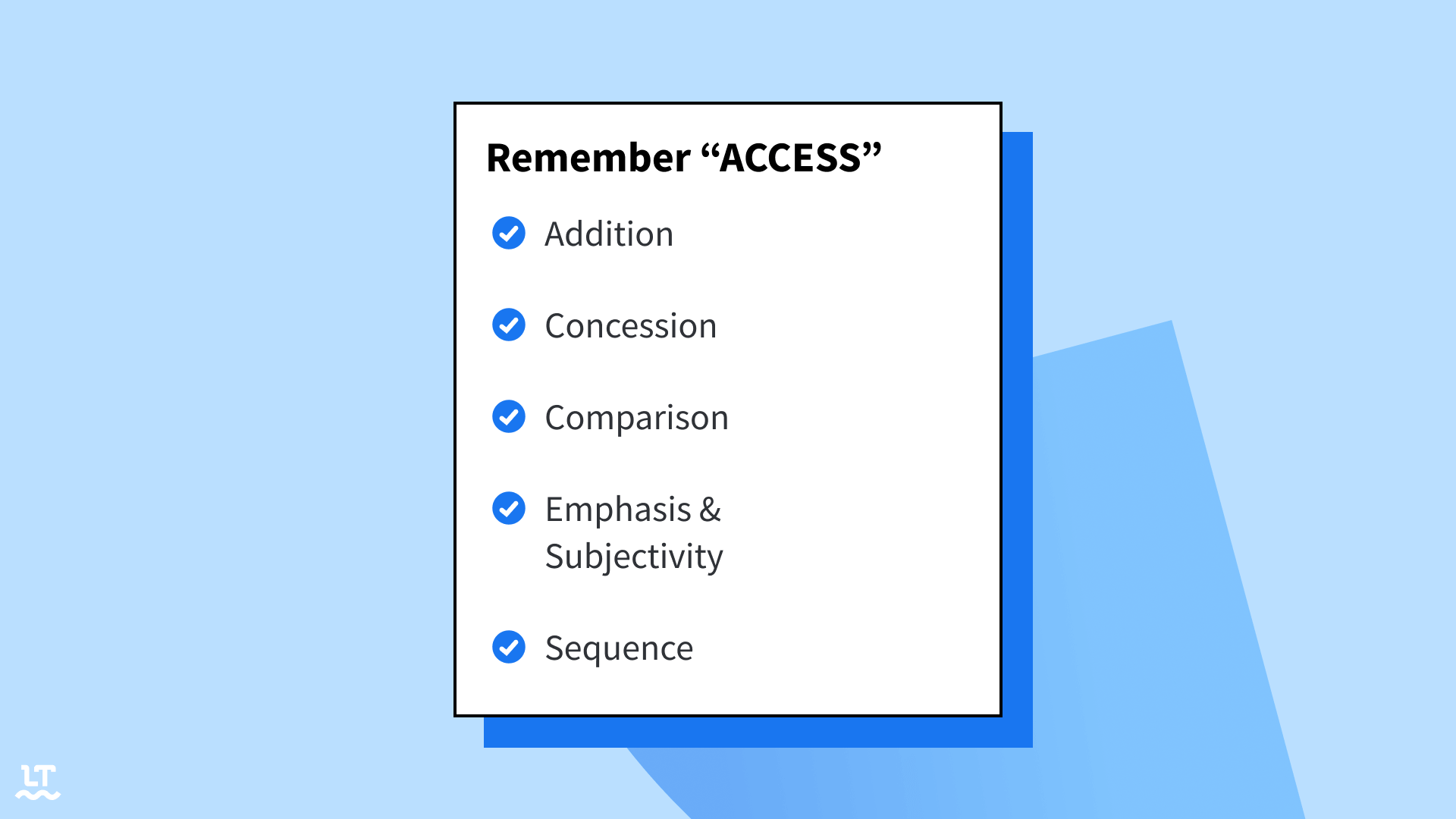Correct Use of Linking Words
Linking words, connectives, or transition words all refer to the same words or constructions that facilitate coherence in your texts. They can fulfill various functions (adding, contrasting, elaborating). It’s important to separate them from the main clause by using a comma.
Adverbs as Linking Words
Using connectives in your writing helps the reader to understand the links between independent sentences. In this article, we focus on various ways to take advantage of these transition words. Spoiler alert: the following comma is usually mandatory.
Adverbs usually specify verbs (actions) or adjectives (characteristics). However, they may also serve as a sentence adverb modifying the whole statement—often for some kind of emphasis or evaluation. A comma always follows to separate the adverb from the main clause.
Obviously, they hadn’t been doing much thinking at all.
Undoubtedly, says Descartes, the world started in all its perfection.
These adverbs express concession, sequence, comparison, and addition—among other functions (like elaboration). The most important ones are:
| Category | Linking Words |
|---|---|
| Concession | Nevertheless, … Nonetheless, … However, … |
| Sequence | First, … Secondly, … Subsequently, … Finally, … Consequently, … Therefore, … So, … Thus, … Hence, … Due to …, … |
| Comparison | Similarly, … Conversely, … |
| Addition | Additionally, … Besides, … Moreover, … Furthermore, … By the way, … Namely, … |
| Emphasis / Subjectivity | Indeed, … Importantly, … Specifically, … Admittedly, … Particularly, … Clearly, … Undoubtedly, … Obviously, … |
Verb Constructions as Connectors
If you have an introductory clause with a gerund, past participle, or to-infinitive, you separate it from the main clause by using a comma:
Generally speaking, we are entirely happy here.
To put it in a nutshell, I quit.
You can find these constructions most often when linking paragraphs to one another:
To conclude, the study has proven that old theories were based on different flaws.
Compared to the Michelangelo’s work, da Vinci’s pictures are unremarkable.
Whole Phrases as Transition Words
You’re also able to link your ideas by including phrases of nouns, prepositions, determiners, and other words. If you use one of these constructions, try to remember to place a comma after it.
| Category | Linking Words |
|---|---|
| Concession | In spite of …, … Despite the …, … |
| Sequence | As a result, … As a consequence, … In conclusion, … |
| Comparison | In the same way, … On the one hand, … On the other hand, … On the contrary, … |
| Addition | In addition, … For instance, … For example, … |
Long story short, there are plenty of connectives that automatically trigger the use of a comma. Fortunately, LanguageTool knows all of them, and reminds you to include every comma in order to improve your written work. Additionally, it includes a style checker, in case a linking phrase is not quite idiomatic. Remember to pay attention to how you connect your sentences into a coherent text.


